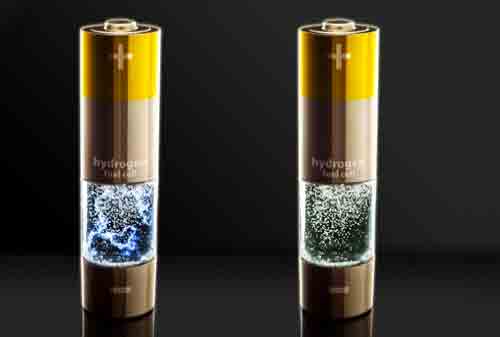From cell phones to cars and flashlights, batteries play an important role in everyday life. Scientists and technology companies constantly are seeking ways to improve battery life and efficiency. Now, for the first time using a water-based solution, researchers at the University of Missouri have created a long-lasting and more efficient nuclear battery that could be used for many applications such as a reliable energy source in automobiles and also in complicated applications such as space flight.
“Betavoltaics, a battery technology that generates power from radiation, has been studied as an energy source since the 1950s,” said Jae W. Kwon, an associate professor of electrical and computer engineering and nuclear engineering in the College of Engineering at MU. “Controlled nuclear technologies are not inherently dangerous. We already have many commercial uses of nuclear technologies in our lives including fire detectors in bedrooms and emergency exit signs in buildings.”
The battery uses a radioactive isotope called strontium-90 that boosts electrochemcial energy in a water-based solution. A nanostructured titanium dioxide electrode (the common element found in sunscreens and UV blockers) with a platinum coating collects and effectively converts energy into electrons.
“Water acts as a buffer and surface plasmons created in the device turned out to be very useful in increasing its efficiency,” Kwon said. “The ionic solution is not easily frozen at very low temperatures and could work in a wide variety of applications including car batteries and, if packaged properly, perhaps spacecraft.”
The research, “Plasmon-assisted radiolytic energy conversion in aqueous solutions,” was conducted by Kwon’s research group at MU, and was published in Nature.
If our reporting has informed or inspired you, please consider making a donation. Every contribution, no matter the size, empowers us to continue delivering accurate, engaging, and trustworthy science and medical news. Independent journalism requires time, effort, and resources—your support ensures we can keep uncovering the stories that matter most to you.
Join us in making knowledge accessible and impactful. Thank you for standing with us!


“Controlled nuclear technologies are not inherently dangerous.”
It’s that first word that’s really the tricky one, isn’t it….
Any use of strontium 90 would have to be occasioned by a need so compelling that it was worth any risk to achieve it. There is no other way its use would constitute sane behavior.
David Chester’s comment demonstrates pathetic fear backed up by scientific illiteracy. Nobody is denying radioactivity is dangerous. However, mr. Chester decided to be a classical idiot by not reading the article and rather decided to express panic in the comments. Let’s read: “Controlled nuclear technologies are not inherently dangerous. We already have many commercial uses of nuclear technologies in our lives including fire detectors in bedrooms and emergency exit signs in buildings.” I’m really sick and tired of morons like mr. Chester who just spread chaos with their stupidity and irrational fears and thus prevent scientific progress. It would be nice if we could send people like him into the Sun.
Strontium 90 is the worst and most long lasting radio-active product of nuclear detonations. The amounts of it remaining from the early atomic bomb tests and warfare are still largely with us. It is deadly to mankind and anybody wanting to make use of it, by concentrating it in one place like a battery, is creating a source of danger.
This material is best left alone.
What exactly is the irony in the ionic solution?